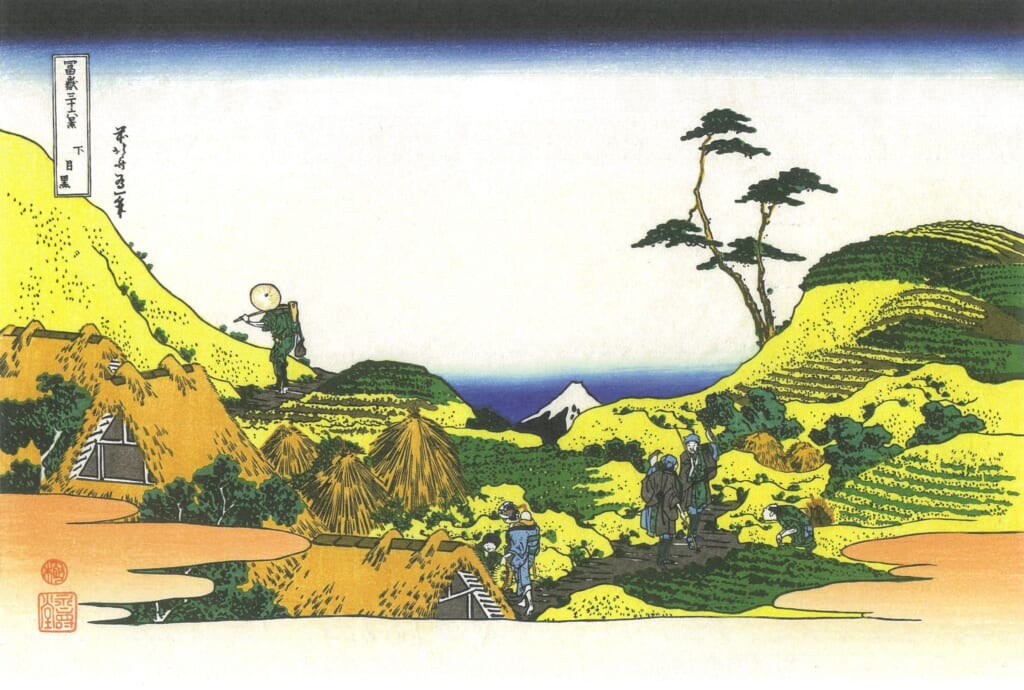Katsushika Hokusai’s Ukiyo-e I will explain Shimomeguro in Thirty-six Views of Mount Fuji.
Shimomeguro in this ukiyo-e is now Shimomeguro, Meguro-ku, Tokyo.
At that time, it was a farming village with many fields, and was also known as Otakaba, where the shogun went falconry.
In the ukiyo-e composition, two men talking by the roadside in the center of the screen are falconers, and a falcon is perched in their hands.
In the fields, you can also see a farmer listening to falconers while working in the field, and a farmer carrying a hoe to the field.
A farmer’s mother and child are depicted.
Mt.Fuji peeks out from between the undulating hills.
About falconers, the area around Meguro, located in the southwestern suburbs of Edo, was a rolling hilly area and existed as the shogunate’s falcon ground.
Under the Toyotomi and Tokugawa governments, it was called falconry. During the Edo period, only shoguns and daimyo had falconry grounds.
Emperors and court nobles did not have falcon grounds. Falconry grounds in the early modern period consisted of official falconry grounds and clan falconry grounds.
In the Edo period, falconry was loved by many feudal lords as a way to conduct military drills and inspect the state of the people.
The third Tokugawa shogun, Iemitsu, and the eighth shogun, Yoshimune, established vast falcon grounds in Edo and its suburbs, set up a falconer’s office, and established laws related to falconry.
The falcon was originally entrusted to us by the Imperial Court, so it was so precious that even the general called it a falcon.
It declined with the invention of firearms in 1490. Obstructed by urbanization and overcrowded transportation networks and power lines, it remains a hobby for a small number of people.
This ukiyo-e is from around 1830 to 1832. Hokusai is around 72 years old.



